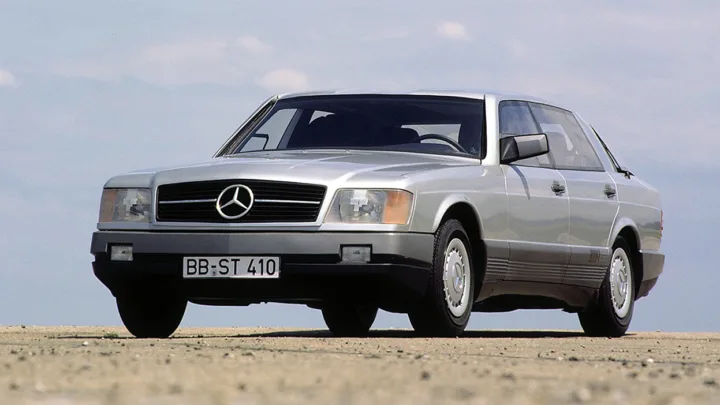Mercedes Auto 2000: the future seen 45 years ago
In the 1970s and 1980s, Mercedes-Benz presented concept cars at motor shows as a relatively rare occurrence, but they were always eagerly anticipated by experts. This was the case with the so-called Mercedes Auto 2000, which was first shown to the public in September 1981 in Frankfurt piese auto online.

The main guidelines embodied by this attractive experiment are related to achieving serious fuel economy, maximum safety, optimal performance and adaptation to the strictest environmental standards at the time.
The main step for the most efficient implementation of the first task, related to fuel consumption, is to reduce the coefficient of aerodynamic resistance as much as possible. That is why the body of the car (in the basis of which the design of the current S-class or W126 can be seen), is shaped so that the rear part gradually slopes down to its very end, which is vertically cut off (according to the patent of the German engineer and aerodynamics specialist Vunibald Kam). Thus, the coefficient of air resistance Cx is reduced to 0.3.
To improve safety, some of the external components in the front are made of lightweight and deformable synthetic materials.
The most advanced achievements of electronics for that era are also widely used in Auto 2000. Electronic systems not only control the main operating parameters, but also constantly provide the driver with the necessary information on a special display that takes the place of the main instruments. They can also determine the optimal fuel consumption, as well as the most suitable route. Using an electronic control unit, the driver can select three driving programs: "economical", "urban" or "fast".
To improve active safety, an anti-lock braking system, a radar device for signaling the distance, and a device to prevent wheel skidding during acceleration have been implemented.
In the event of a mass production of such a car, three main types of engines are planned: turbodiesel, gasoline V-shaped with the option of switching off part of the cylinders, as well as a gas turbine. The V6 diesel engine has a working volume of 3.3 liters and a power of 150 hp at 4600 rpm. The two turbochargers are connected in parallel, which makes it possible to improve the torque characteristics at low speeds. The V8 gasoline engine has a working volume of 3.8 liters and develops the same power at 4000 rpm. The functions of the ignition system, gasoline injection, idle speed and the possibility of partial cylinder shutdown are performed by a central electronic device, which contributes to increasing economy.
Despite the great interest aroused by the third alternative propulsion method, the two-stage gas turbine, it was rejected as too complex, insufficiently reliable, and extremely expensive to implement in mass production.
The curb weight of the Mercedes Auto 2000 is 1600 kg, and the payload is 500 kg. The main dimensions of the car are: length 5100 mm, width 1820 mm, height 1352 mm and wheelbase 2935 mm.
- 2025-12-09 - Renault 25: a sense of luxury from the 80s
- 2025-12-08 - Creative freedom in socialist Poland: the cross between Fiat 126P and Polonez
- 2025-12-06 - Toyota GR GT: Supra's bigger "brother" comes with a V8 engine
- 2025-12-05 - Opel OSV 40: the battle for safety began half a century ago
- 2025-12-04 - 60 years since the premiere of the first Opel GT
- 2025-12-03 - The Fabia lacks subtlety
- 2025-12-02 - The big test: what are the best winter tires for 2026?
- 2025-12-01 - Used car inspection: Porsche 911 (992)
- 2025-11-30 - Nikola Tsolov with a phenomenal performance in his first Formula 2 start
- 2025-11-29 - Nikola Tsolov with an impressive result in his first Formula 2 qualifying












